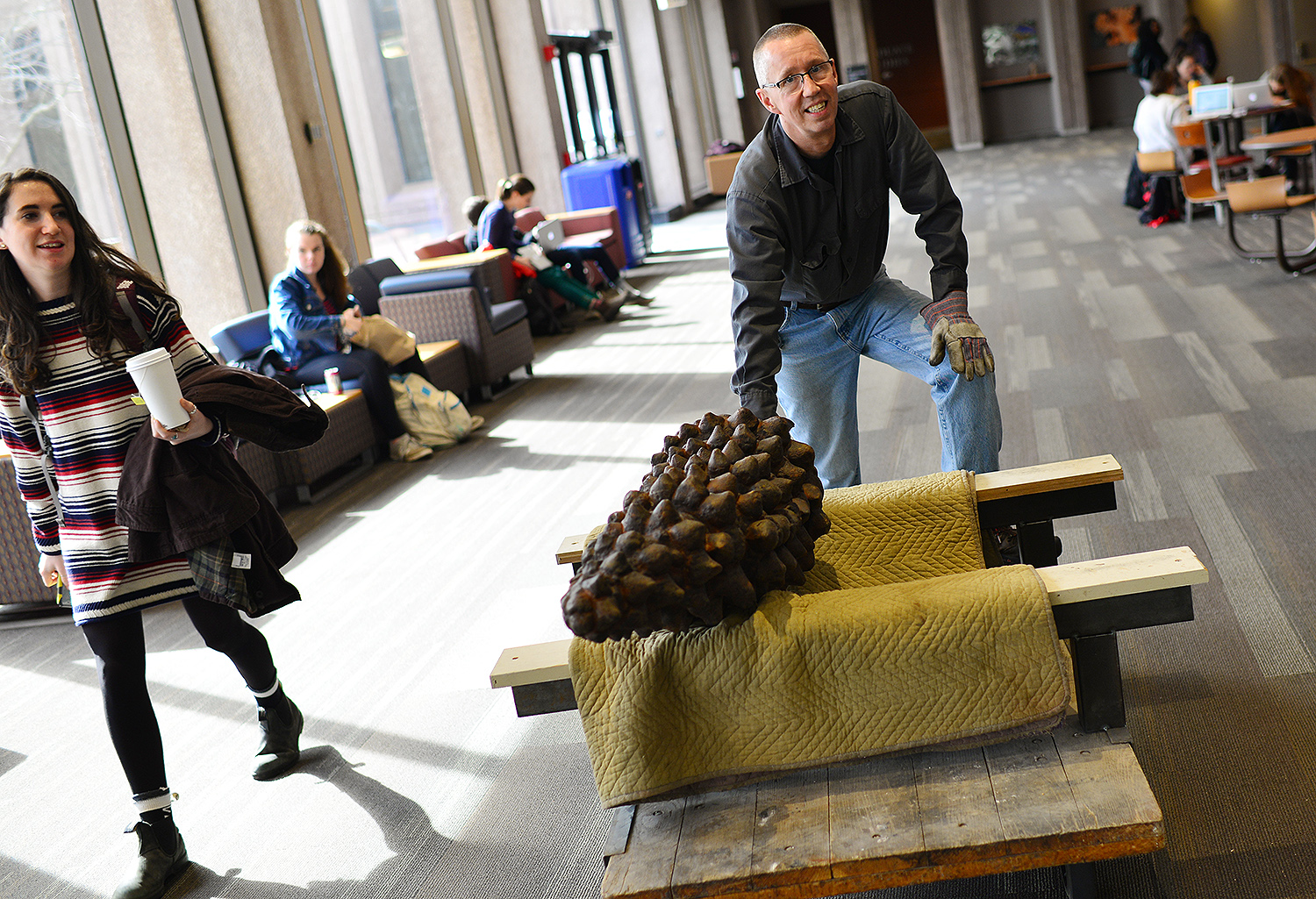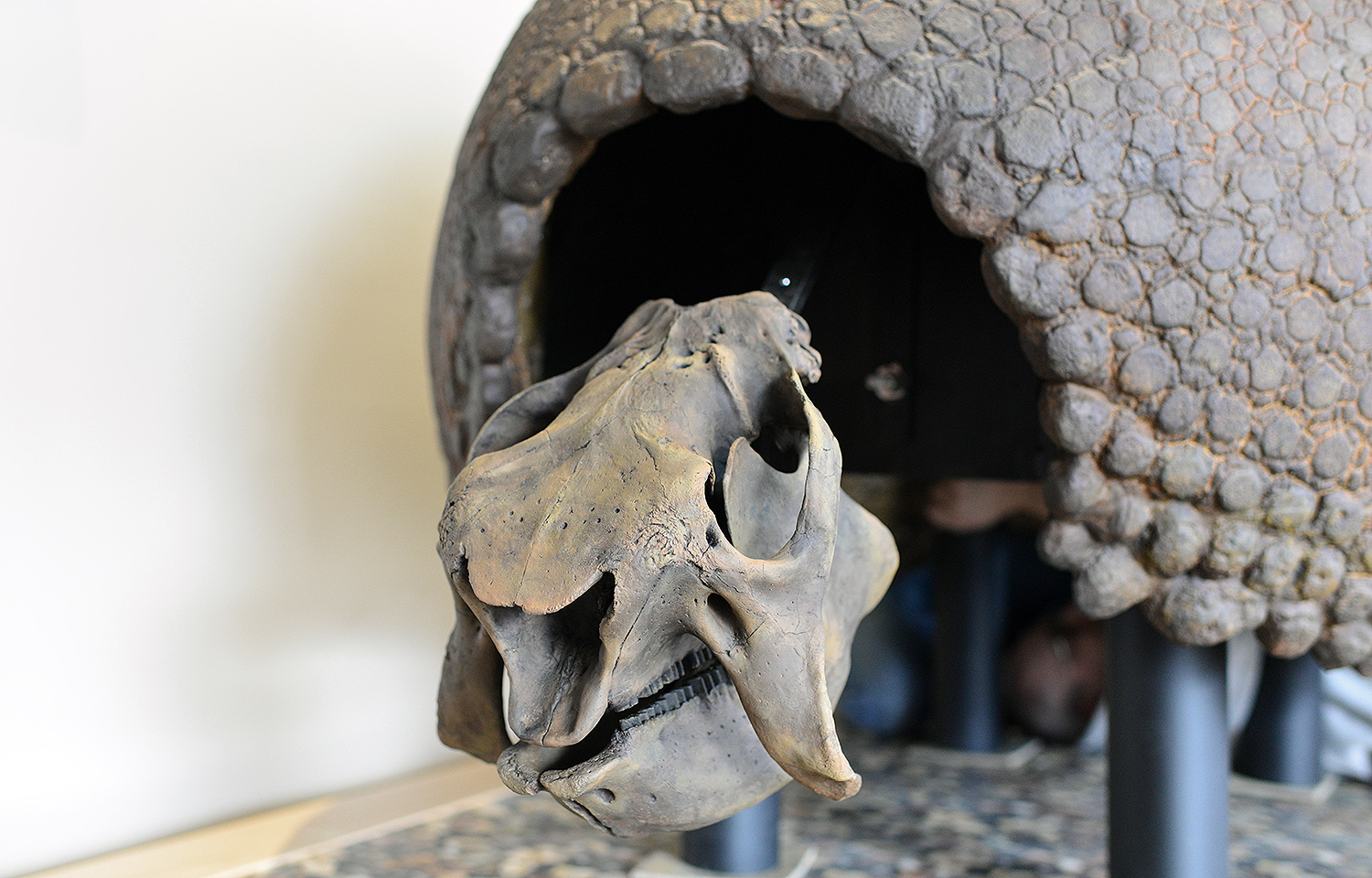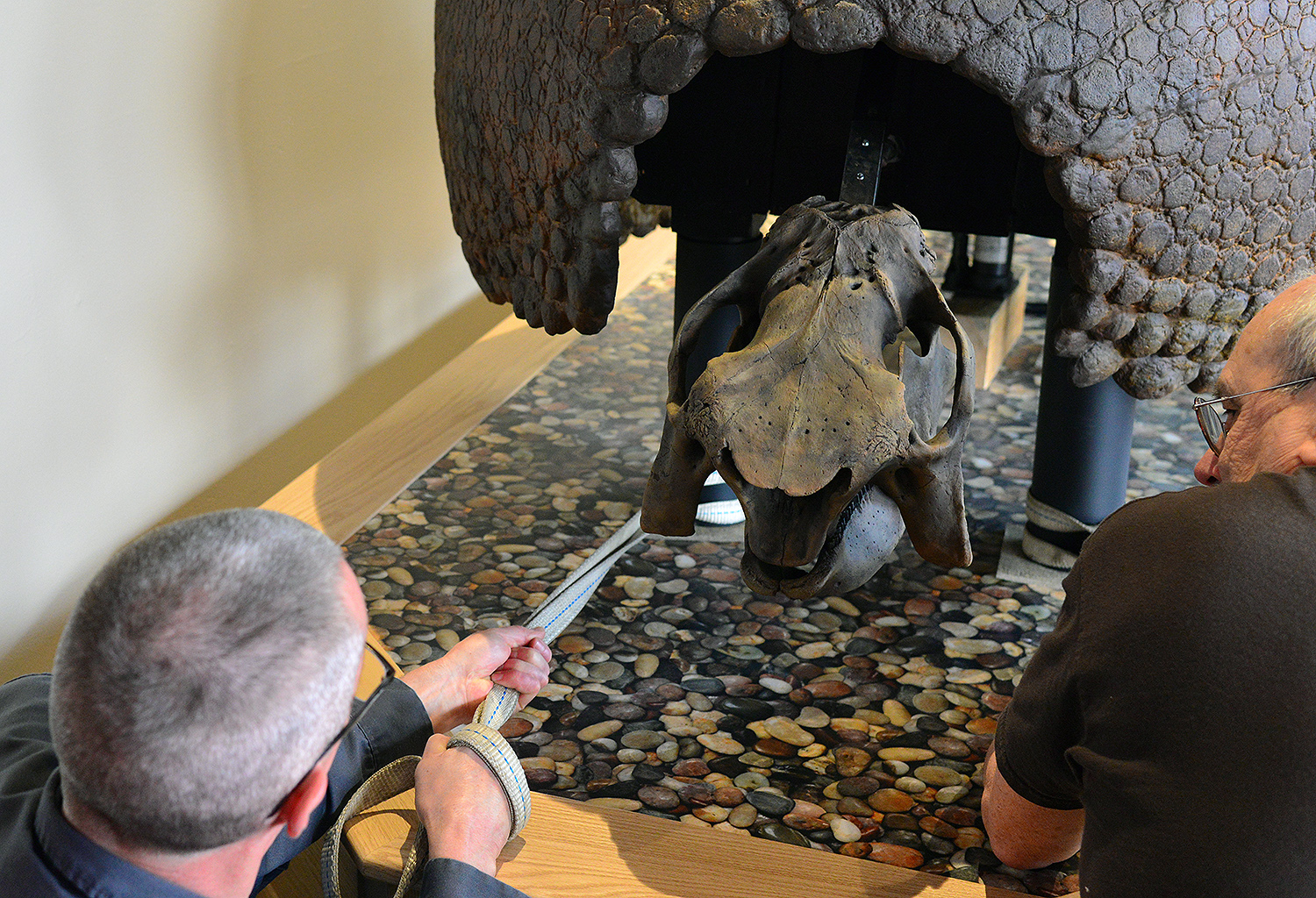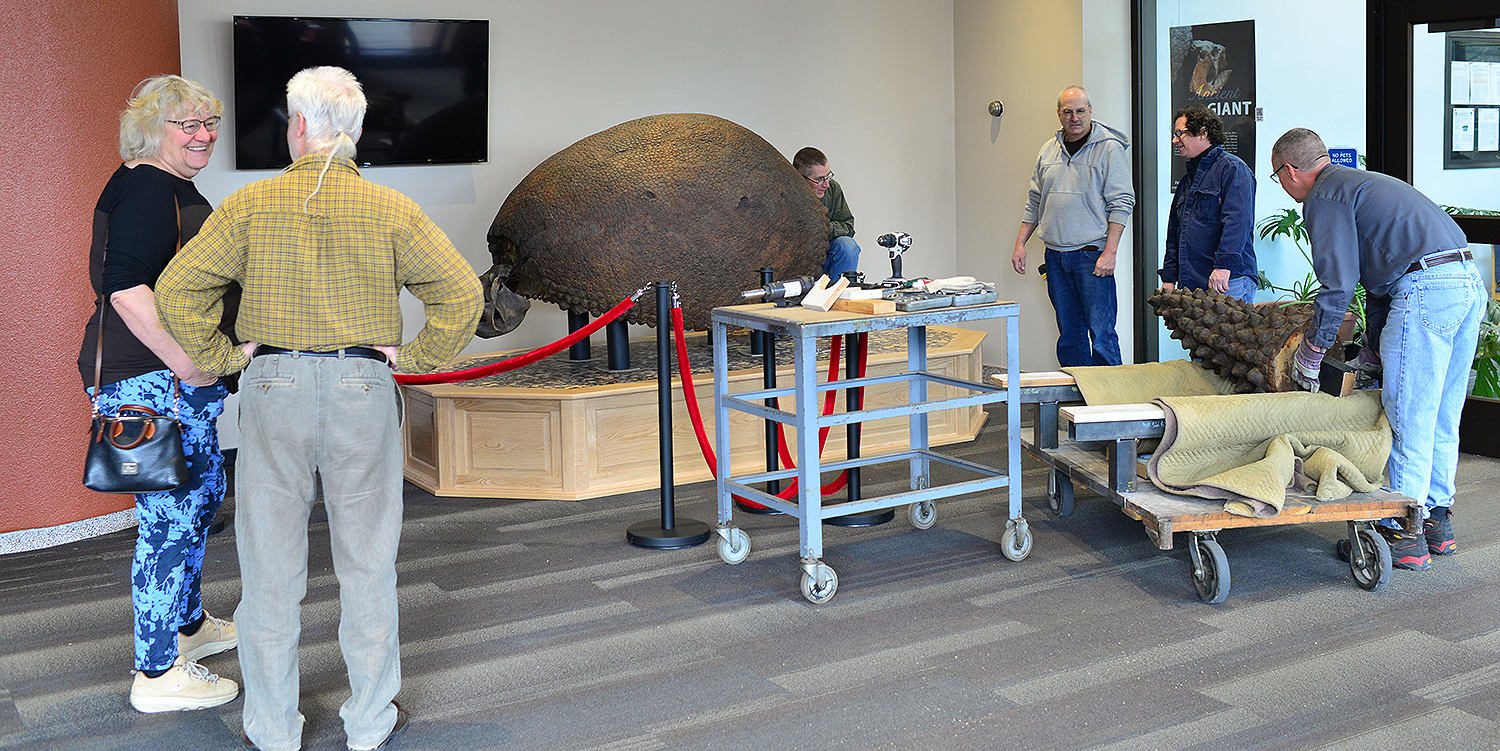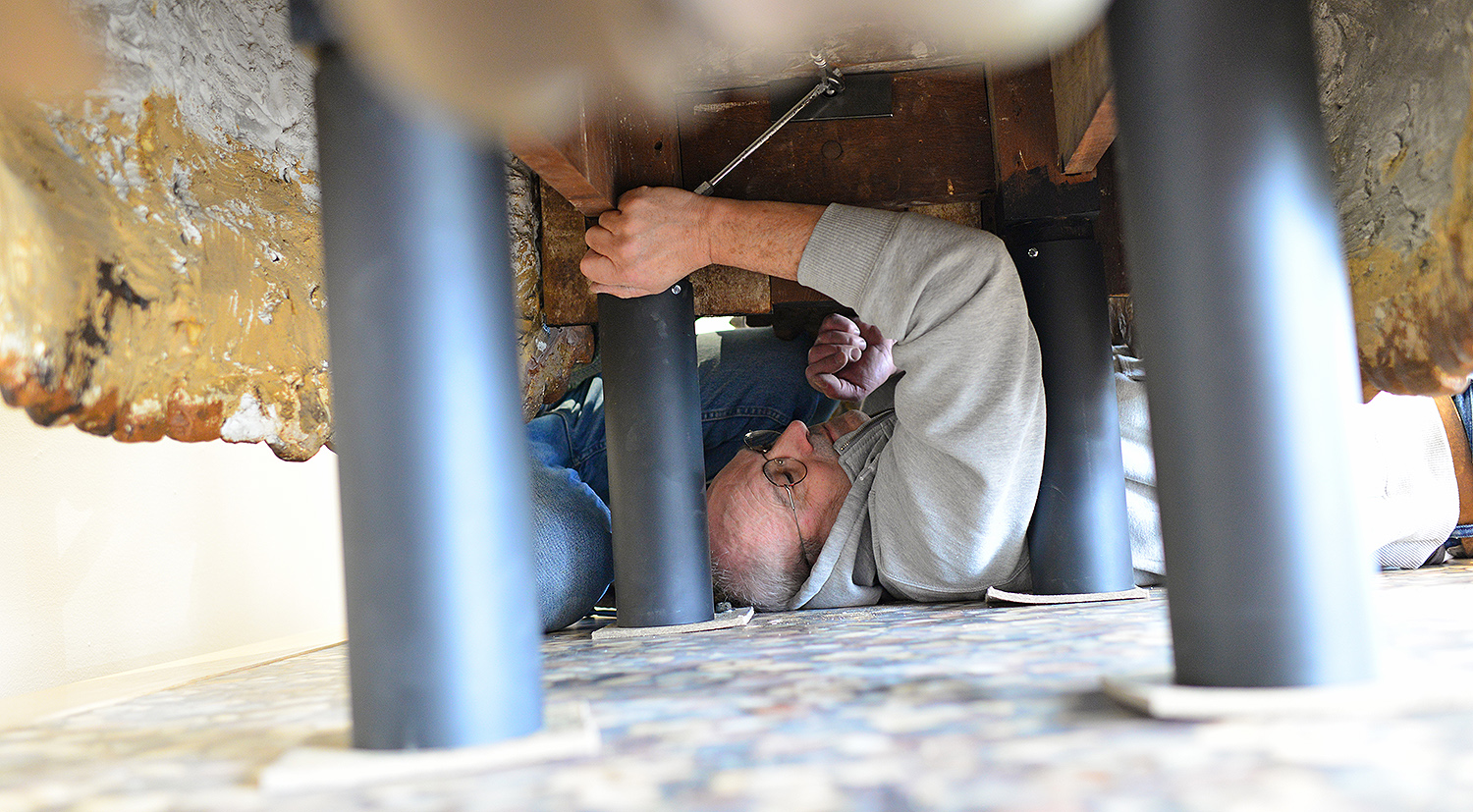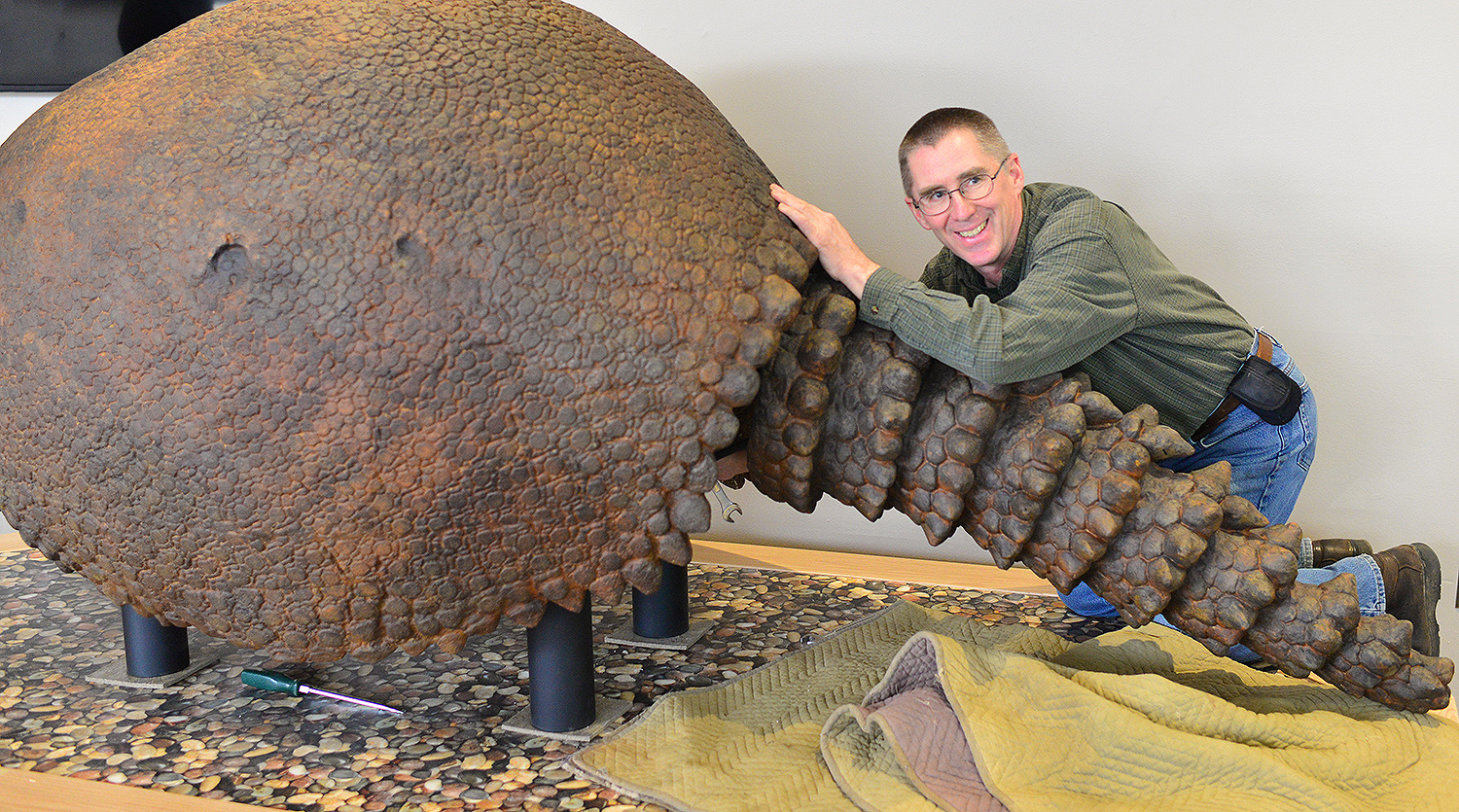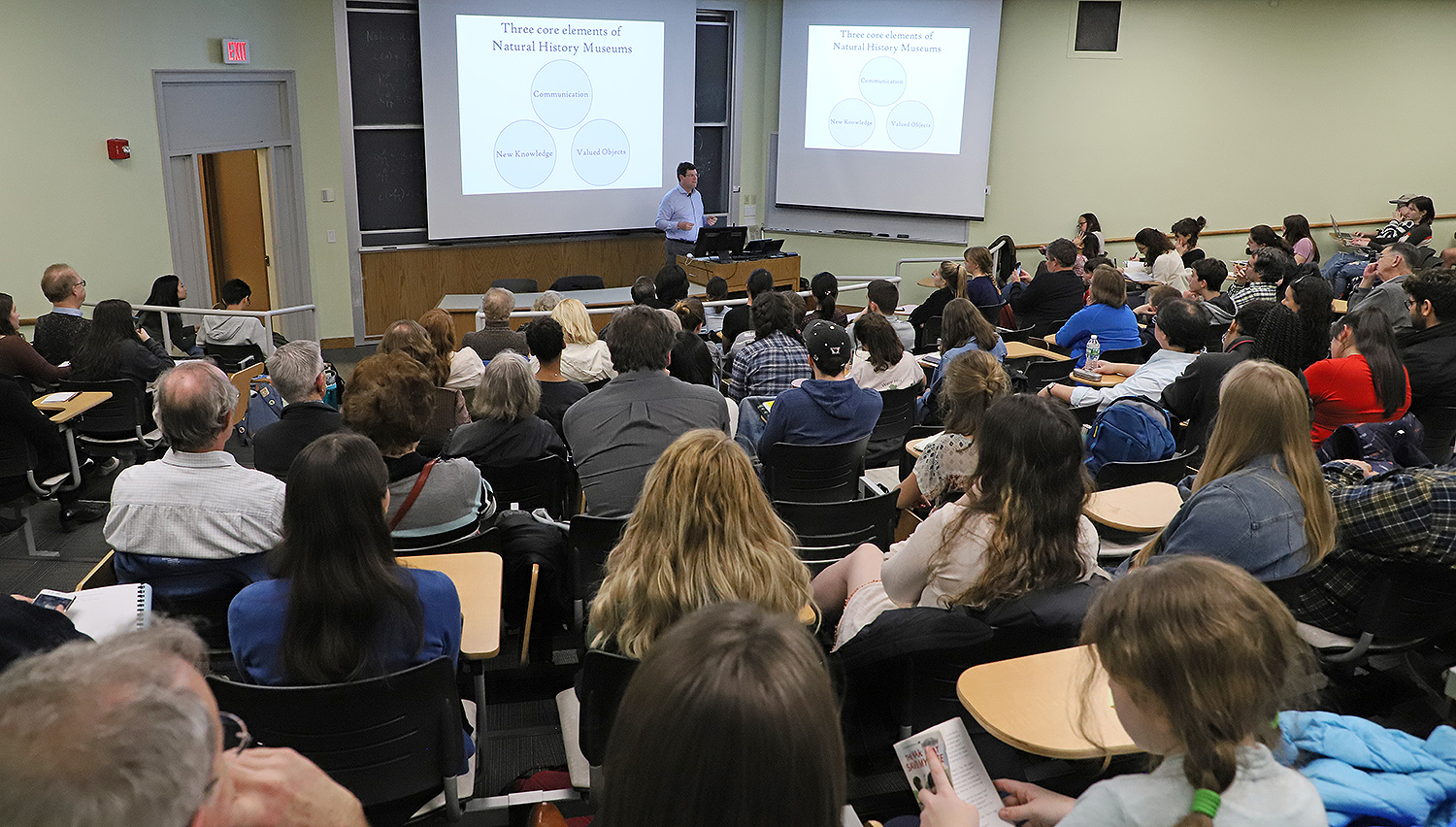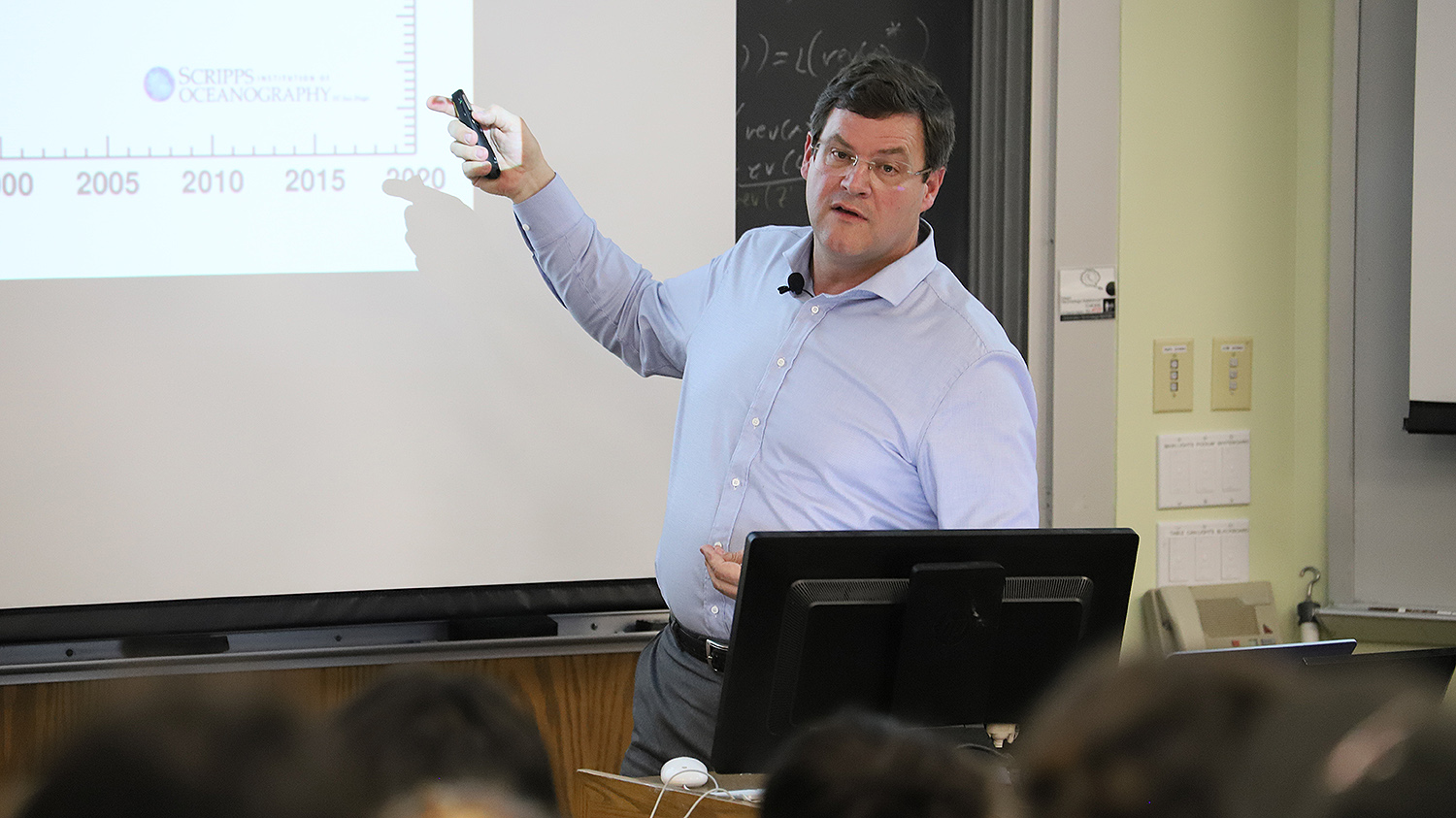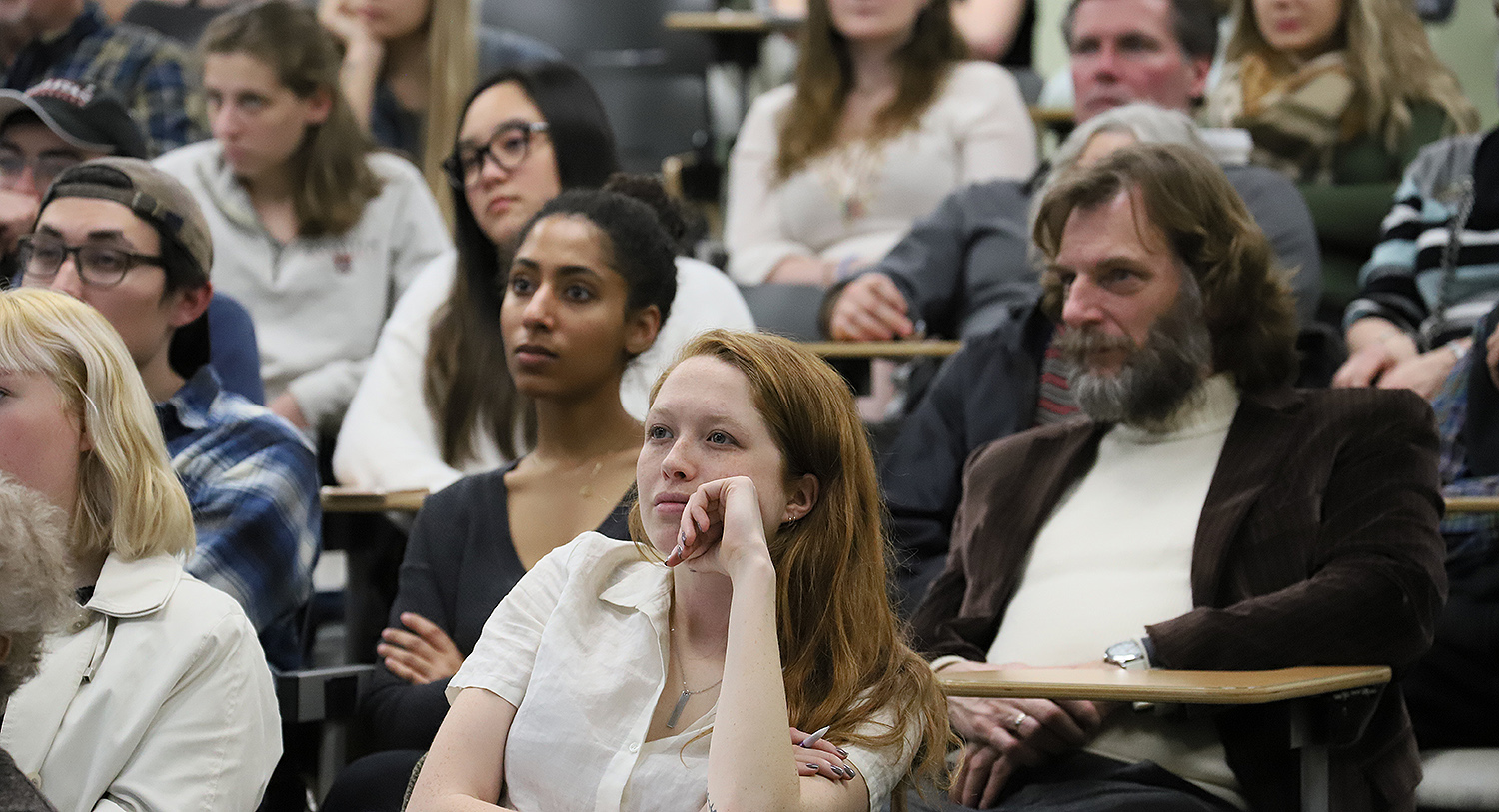Giant Glyptodon Emerges in Exley Science Center
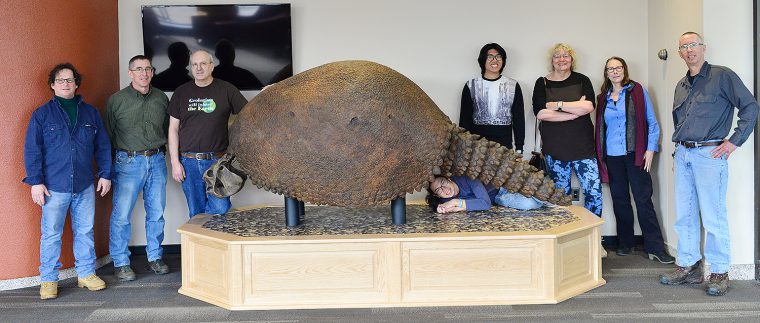
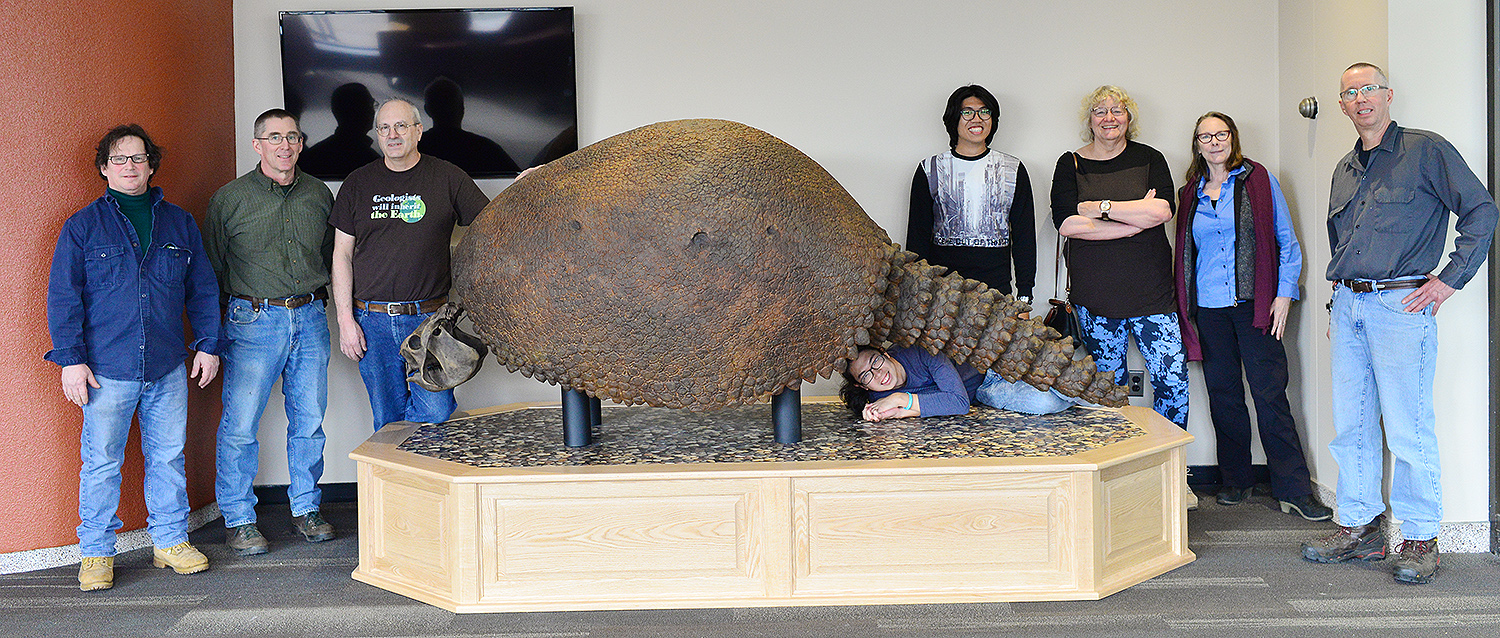
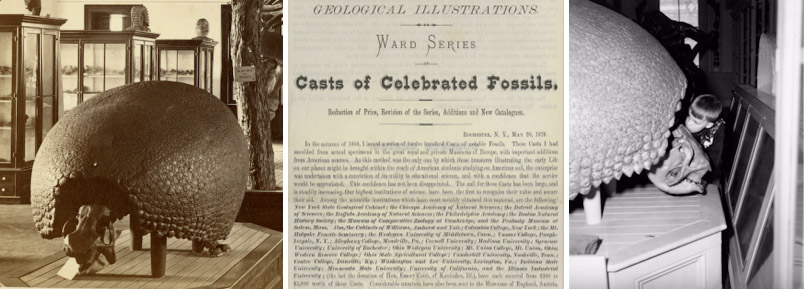
For the past 60 years, a massive megafauna mammal thrived in crates buried in Wesleyan’s tunnels and attics. This month, the creature, known as a Glyptodon, has emerged in Exley Science Center for public viewing.
Although the armored armadillo-like animal became extinct more than 10,000 years ago, Wesleyan acquired a fossil cast in the 1870s, where it became a showpiece at the university’s Orange Judd Museum of Natural Sciences.
In 1957, the museum closed and thousands of artifacts, including the Glyptodon, were haphazardly stuffed into crates and boxes and hauled to multiple locations throughout campus.
“After the museum closed, everything was scattered all over, anywhere there was a place to put it,” said Ellen Thomas, the Harold T. Stearns Professor of Integrative Sciences and research professor of earth and environmental sciences. “Just recently, we’ve started to uncover all these lost treasures and we’re working to get them organized and cataloged. The Glyptodon is one of our major finds.”
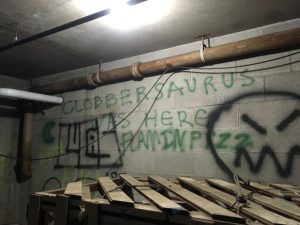
In June 2017, Thomas and her students started their own investigation into Wesleyan’s lost artifacts. While rummaging through Exley Science Center’s “penthouse”—or the attic on the 7th floor—the group discovered a human skeleton cast, more than 50 fossilized fish casts, crocodile teeth, an extinct marine reptile that resembled a dolphin, mammal skulls, and the motehrlode—a rustic wooden crate containing a mysterious jagged pinecone-shaped object.
“This particularly interesting specimen was a cast of a tail of a Glyptodon,” said student researcher Bright Sajirat Palakarn ’20. “Judging from the size of the tail, we estimated that the complete cast of a full-sized replica of a Glyptodon would be around the size of a small city car or a classic Volkswagen.”
The tail was housed in a box labeled ‘2 of 3.’
“So we knew there had to be two other boxes,” Thomas said. Later we found the Glyptodon‘s carapace (body segment) in a giant crate labeled ‘1 of 3’ in the Foss tunnels. We looked all over but never found crate ‘3 of 3,’ and that’s probably where the head and foot was that we saw in pictures taken at the old museum. But lots of the items from the old museum were misplaced or lost over time.”
In October 2017, students moved the crates to the machine shop at the ground level of Exley, where the body and tail were reunited again after 60 years. Instrument specialists David and Bruce Strickland and Jim Zareski, research assistant/lab manager for the Earth and Environmental Sciences Department, worked on mounting the Glyptodon and building a wooden pedestal for it, similar to the base it once stood on at the Judd Museum.

Since the cast head was never found, Thomas ordered a replacement, and in February, students painted the entire Glyptodon—head to tail. “Beleive it or not, you can still order parts for it,” she said. “I’d like to order feet for it someday.”
Phase II of the set-up will include a rotating slide show about the Glyptodon on a mounted TV, and a nine-banded armadillo—Dasypus novemcinctum—display, cased in glass.
“The nine-banded armadillo is a species alive today,” said Annie Burke, chair and professor of biology. “Displayed next to the fossil Glyptodon, it provides an example of how morphologies—size and shape—can evolve within a single lineage.”
Those who also assisted with the Glyptodon emergence include James Zareski, research assistant/ lab manager; Joel Labella, facilities manager; Tan Yu Kai ’20, Andy Tan Dick Yee ’21; Wisly Juganda ’20; Miah Mai Anh Tran ’20.
“It has been a great journey, having Professor Thomas and Professor Burke endearingly calling us Glyptodon-related titles, from Glyptodon Cleaners to Master Plasterers to finally now Master Glyptodoners,” Tan Dick Yee said.
The Glyptodon is now a permanent exhibition of Wesleyan’s Joe Webb Peoples Museum & Collections, based on the fourth floor of Exley Science Center. It’s is located in the lobby of Exley Science Center between the entrance to the Science Library and Tishler Hall. The original fossil of which Wesleyan’s is cast was found in Argentina in 1846 and is now in a museum in Dijon, France.
“We’re go glad we were able to bring the Glyptodon back into public view, so she can be enjoyed by all,” Thomas said.

Learn about the Glyptodon‘s restoration process in this video:
View photos of the Glyptodon‘s installation on Feb. 26 below: (Photos by Olivia Drake)
